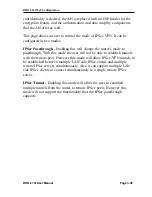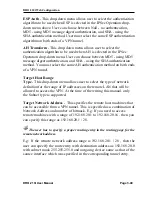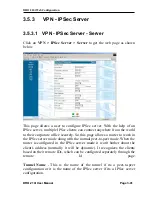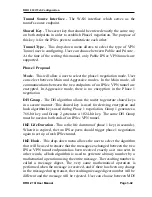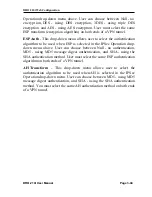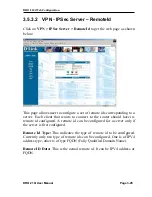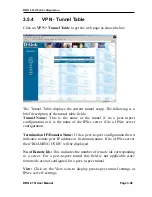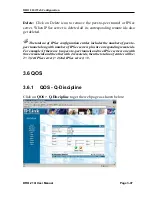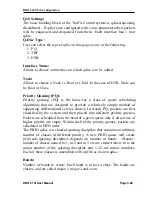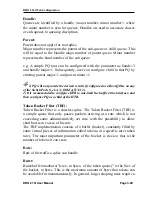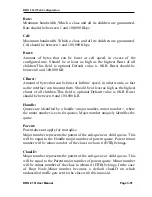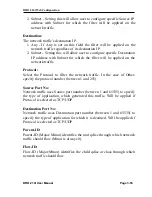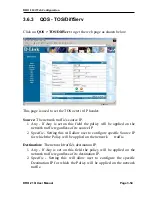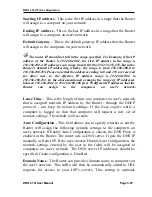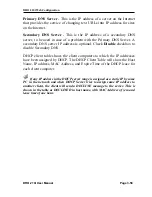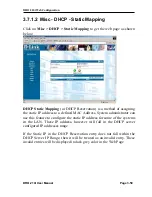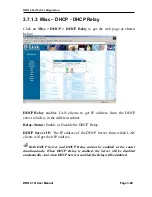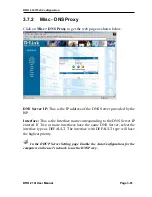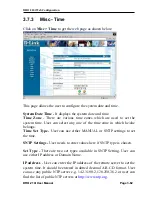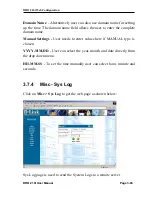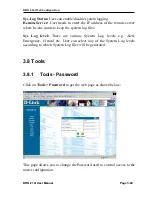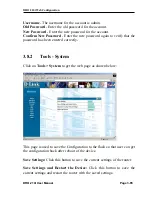
DRO-210i Web Configuration
DRO-210i User Manual Page 3-50
larger buffer. For 10Mpbs on Intel, you need at least 10kbytes buffer if
you want to reach your configured rate. If your buffer is too small, packets
may be dropped because more tokens arrive per timer tick than fit in your
bucket.
Latency:
Latency or Limit "(size -in bytes- of the packets queue)" is the number of
bytes that can be queued waiting for tokens to become available i.e.
maximum amount of time a packet can be in the TBF.
Parent:
Parent does not apply for root qdisc.
Major number represents the parent of the sub-queue or child queue. This
will be equal to the Handle major number of parent queue. Parent minor
number will be minor number of the class to whom it (TBF) belongs.
Handle:
Queues are identified by a handle <major number, minor number>, where
the minor number is zero for queues. Major number uniquely identified
the queue.
e.g. TBF can be a child of a PQ, and user can configure by entering values
like rate as 115 Kbps, burst as 5Kb and latency as 70 ms. These value are
given just for an example.
Hierarchical Token Bucket (HTB):
Hierarchical Token Bucket is a classful qdisc. HTB ensures that the
amount of service provided to each class is at least the minimum of the
amount it requests and the amount assigned to it. When a class requests
less than the amount assigned, the remaining (excess) bandwidth is
distributed to other classes which request service and which have highest
priority.
Priority:
Classes with the highest priority(least value) will get excess bandwidth
first. This field is optional. Default value is 0 .Priority field value 0 has
highest priority .Priority should be between 0 and 255.

